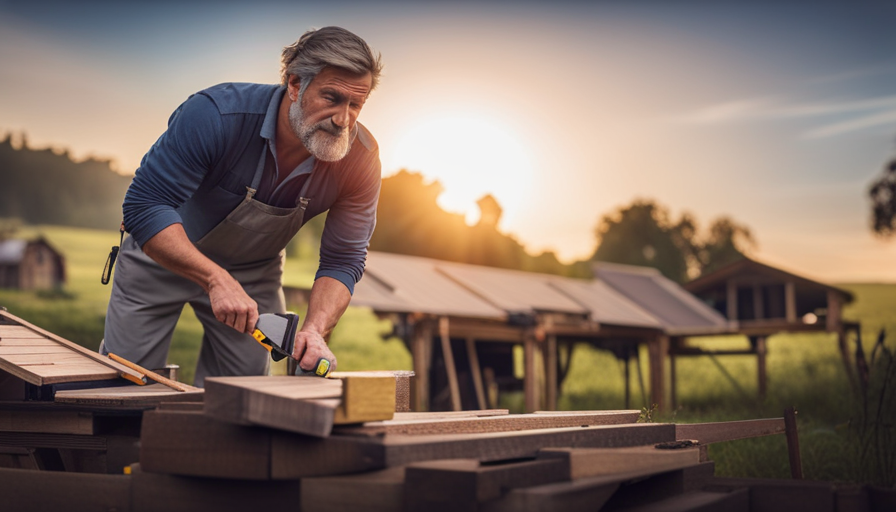Building a tree house at ground level is much simpler than constructing one in a tree, and a modern tree house can be just as beautiful as a traditional one in terms of design. When building a tree house, it is important to remember a few key points. The structure should be tall enough for someone to stand inside comfortably and the roof should be higher than the ground. It is also important to avoid common mistakes during the construction process.
Free-Form Approach to Building a Tree House
When planning the structure of your treehouse, it is a good idea to consider the form of the tree. If possible, try to build around limbs and avoid harming the tree. The best way to fasten planks to the tree is to lattice them together using rope or fasteners. Drilling or nail guns should be reserved for last resorts. Then, you’ll have a treehouse with a perfect roof.
For instance, using more than one tree can result in a more giant, more stable treehouse. This approach also requires less bracing. Tree trunks naturally split in three at their base and splay outwards. A pair of trees, closely spaced apart, can work perfectly for a large-scale treehouse. You can also support the outside corners with posts. Using more than two trees in one design will also allow you to get a more giant tree.
If you’re planning on building a treehouse in a forest, choose a tree with big, spread-out branches. If you have young children, choose a tree with low branches. The tree should be large enough to hold the weight of the house and must be far enough away from power lines to ensure safety. Ensure the tree is free of power lines and provides a shelter above. Before you begin your treehouse project, you should consult the plans for accurate tree measurements.
Once you’ve decided on the size and location of your tree, you can start thinking about your design. If you’re not sure what you want your treehouse to look like, you can search the internet for inspiration. There are plenty of plans for building a tree house online. You can find simple plans for single rooms and elaborate, multi-room structures. Just make sure to use the right materials for the job.
Common Mistakes to Avoid
While there are many mistakes you can make when building a tree house on the ground, most of them will not affect your project negatively in the short term. However, if you don’t catch them right away, you may not realize the damage they can cause in the long run. In this article, we’ll discuss some of the most common mistakes you might make and how to avoid them.
First and foremost, don’t build your tree house too close to power lines. This can result in an accident, so it’s essential to avoid this altogether. You also need to consider the safety of your children, so don’t build it close to trees that can fall. If a tree is too close to power lines, it can also catch fire. Luckily, you can do a few things to prevent this problem.
One of the most important mistakes to avoid when building a tree house is not leaving enough room for the tree to grow. You need to have a stable platform so you can build the treehouse. Otherwise, it could cause it to move. This could cause limbs or branches to break, or even kill the tree. When building a tree house, make sure that you leave enough space for the tree to grow.
Second, taking accurate measurements of the trees you plan to build on is important. Don’t just eyeball it; you’ll have disastrous results if you don’t follow the measurements and plan well. Also, mark the beams and temporarily mark them with tape or paper. This will help prevent any surprises and make your project easier and faster. Finally, ensure everything is level before you fasten anything to the platform.
The final mistake you must avoid when building a tree house on the earth is not protecting the tree’s structure from water. This mistake is common in most backyard treehouses. You should avoid this by ensuring the structure is waterproof. Adding a roof overhang will help keep the treehouse dry and prevent water wicking. If the treehouse is designed for climate control, you should use paper flooring.
Tree House Height Should Be No Higher than Head Height
The construction of a treehouse can be tricky. There are many different options for building a treehouse. Some people build it from wood because it is easy to work with and looks great in the tree. However, you should be careful when building handholds made of wood. This can cause splinters and snagging hazards. Ensure all screws are self-countersunk to ensure that the heads are sunk below the wood. If you need to use large fasteners, ensure the holes are countersunk.
To keep your kids safe, the height of the tree house should be no higher than head level. The ideal height for a treehouse should be between 6 and 12 feet. It should be higher than head level but not higher than the height of a child’s head. This height will provide a sense of height, but it will be safer if the child falls. If the child is very young, build the treehouse lower.
To avoid splitting your tree, pre-drill the holes for the fixings. Make sure to make sure that they are at least 200mm apart. It is a good idea to use coach screws or bolts that are hex-heads. These are long wood screws that have a washer in between the head and the beam. You can also use thicker timbers to ensure that the beams are parallel and evenly spaced.
The base of the treehouse should be made of light wood. The strip should be at least one foot lower than the desired head and floor height. The treehouse should have at least two joists, each separated at the base. If the structure is higher, use two trees. If the treehouse is smaller, you can use only one tree. If you are building a larger treehouse, it is better to use three trees instead of one. You will not need as much bracing because the extra joists will be easier to fix.
The height of the treehouse platform should not be higher than the head height of the person sitting in it. It should be stable to avoid moving parts and creating unsafe conditions. Install cables and ropes over branches should be secure to prevent the bark from becoming cut when the structure moves. To avoid this, you should use sturdy rails and a robust platform. To avoid slipping and sliding down, place the treehouse out of the way of strong winds.
Perch Tree
The eco-PERCH is a luxury tree house that is quick to install and eco-friendly. It’s made entirely from natural materials, has a 6 x 8-meter footprint, and has a complete kitchen, living and dining area, and a bedroom. The eco-PERCH is also fitted with a wall-mounted flat-screen TV and thermostatically-controlled heating. A deep eave and a veranda connect the house to the landscape outside.
Adding a second level of safety is important to a child’s experience in a treehouse. While you may think climbing into a tree house is impossible, you can always install a ladder on the deck. A ladder allows you to get up and down from the house safely. This feature is significant for young kids who may not be very strong. Having a ladder on the deck will be a good idea for kids.
A good tree for a tree house should be low to the ground, with the highest level being 10 feet off the ground. While a tree house should be close to the ground, there is always the risk of falling out. It’s best to use a structurally sound hardwood tree with mature branches. Make sure to prune it of dead leaders or anything else that could cause a hazard for falling out. You may also want to hire an arborist to evaluate the tree’s health.
The first treehouse built in the 1990s is called Peacock Perch. The single-room unit has a double bed and a single cot built into the wall. The treehouse also features a hand sink, cold water, and a toilet. It’s about 30 feet from the nearest bathroom, and guests share it. This means that a family can go for a day trip and enjoy the views from above.
I’m Theodore, and I love tiny houses. In fact, I’m the author of Tiny House 43, a book about tiny houses that are also tree houses. I think they’re magical places where imaginations can run wild and adventures are just waiting to happen.
While tree houses are often associated with childhood, they can be the perfect adult retreat. They offer a cozy space to relax and unwind, surrounded by nature. And since they’re typically built on stilts or raised platforms, they offer stunning views that traditional homes simply can’t match.
If you’re looking for a unique and romantic getaway, a tree house tiny house might just be the perfect option.










